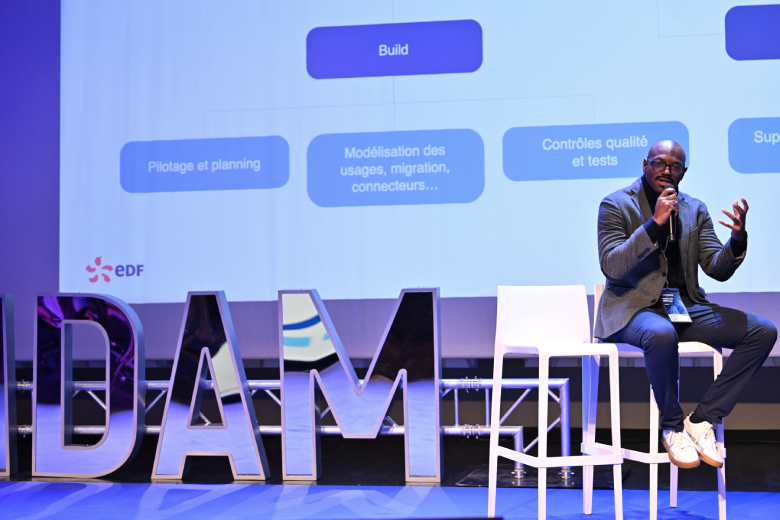
Initially used by archiving and document management platforms, thesauri are now playing a significant role in other corporate applications. In fact, harmonizing technical and brand languages is becoming a strategic challenge. This approach helps to ensure cohesion between the company's different platforms, and to make a success of its digital transformation.
Thesauri are also becoming key elements when it comes to publishing documents to the outside world, particularly to take full advantage of search engine referencing.
However, after implementing over 300 Digital Asset Management projects, we are still surprised by the absence of lexical repositories at our customers' sites.
We often start from scratch when establishing the thesaurus. This is surprising, given that organizations often have knowledge management-related projects: electronic document management, content management, e-Commerce, marketing automation, seo projects...
This common repository of terms should therefore exist. Yet this is rarely the case. We have to recreate everything for the DAM project.
Why?
A first explanation is given by the very nature of DAM projects, whose content can hardly be indexed without a minimum of metadata. Traditional databases or DAMs can easily benefit from powerful full-text search engines.
Images and videos are a different story. Shape recognition technologies are not mature enough to respond with precision. It is therefore essential to go through the text metadata indexing stage, and therefore through thesauri.
The second is probably linked to the compartmentalization of the various departments. Even if one team has set up keyword nomenclatures, it doesn't always share these dictionaries with the others. This is mainly due to the disparity of semantic universes between departments. Each has its own language and terms. The technical department uses a different vocabulary from the marketing department. Convergence is therefore complex.
Our documentation team is systematically involved in auditing the document pool, advising the company and defining its keyword repository.
In this way, the thesaurus defined within the framework of the DAM will, de facto, position itself as a reference base.
This raises the question of the legitimacy of this new reality. Even if a major effort has been made within the DAM to establish this corporate language repository, why not delegate its governance to a wider collective? In fact, many departments use lists of key terms. The communications department needs to harmonize the brand's language. The marketing department is responsible for standardizing keywords for products and services, for SEO purposes, etc.
A virtuous approach is to set up autonomous repositories to manage all these reference languages. New systems exist. They will be dedicated to managing this content and will be responsible for distributing terminologies to other applications. DAM, PIM, EDM and CRM are just some of the applications that will use them.
On the technological front, new semantic solutions based on the RDF standard are slowly appearing in companies. Initially reserved for document specialists, they are destined to become more widespread. However, very few organizations are deploying these so-called triplestore databases.
Their implementation requires a certain amount of technical expertise. These technologies are not yet part of corporate technological standards.
The benefits promised by this new paradigm also need to be proven: to be useful, existing applications need to be modified by redirecting their local repository to these new databases. The cost is therefore significant, and the prospect of a return on investment uncertain.
Performance is also an obstacle. By calling up external repositories, the user experience of the final applications can be severely degraded.
This also raises major questions about data governance. Who will be responsible for managing and animating this single repository?
Previously, each department was autonomous in managing its own keyword repository. Tomorrow, it will be necessary to exchange and share.
The conquest of power over corporate metadata is therefore about to begin.
In recent years, the position of Chief Knowledge Officer (CKO) has been gaining ground within organizations. His or her role is to oversee all aspects of corporate knowledge management. The organization and management of cross-functional thesauri fall squarely within the CKO's remit. As the guardian of the company's semantic temple, the CKO must ensure the relevance of these new sources of knowledge.
As languages are by nature living, new terms are added to, replaced or deleted from existing terminologies every day. The CKO must ensure that this repository evolves in line with product releases, technological developments in the company's sector, and new consumer trends. The CKO will of course call on a number of experts to establish this repository and work on synonym and equivalence issues.
We therefore wish every CKO every success, as they will need to demonstrate great agility in their governance.
Interview with Thomas Larzillière - CEO of Keepeek

EDF présente la refonte de son Media Center et explique comment Keepeek l’aide à mieux centraliser, organiser et partager ses contenus de marque. Une démarche centrée sur les usages pour améliorer la gestion des médias et la collaboration à grande échelle.


La collaboration entre Keepeek et le Club Med a permis de centraliser la gestion des contenus visuels, améliorant ainsi l'efficacité des équipes, la cohérence de la marque et la conformité à l’échelle mondiale. Ce modèle est devenu un atout stratégique pour l’entreprise.
